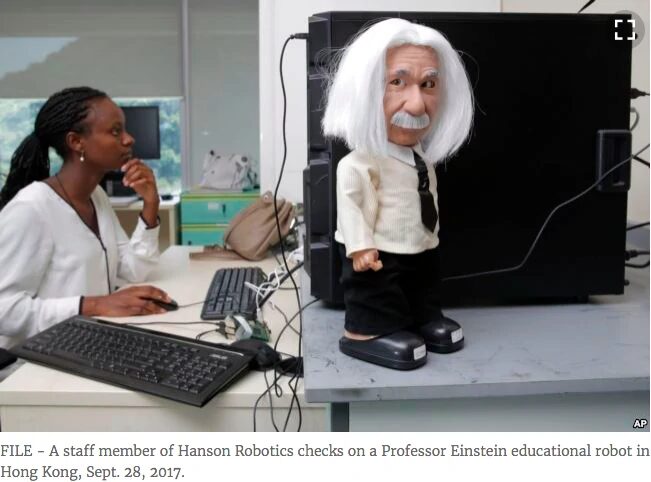The two major tech trends in 2018
By Kelly Luo, May 1, 2018
The 13th Ontario Centre of Excellence (OCE) Discovery took place in Toronto on Apr.30, 2018. Sophia, the humanoid robot kicked off the event. Her inventor Dr. David Hanson, CEO of Hanson Robotics Ltd., joined remotely using holographic technology.
Mr. Yuquan Wang, Managing Partner of Haiyin Capital, one of the Hanson Robotics’ investors, shared his insights on the two major tech trends recently.
Trend 1: Robots are coming
Robot Sophia differs from other robots that she can interact with humans emotionally. Current humans have higher emotional intelligence than robots, however, no matter how high a person’s emotional intelligence is, the number of people you can manage are limited. In theory, the number of machines one can manage is unlimited. In the future, if people can improve their machine intelligence, they can get more things done. We have some successful role models already such as Steve Jobs and Bill Gates.
Robots have three main advantages:
1. Robots can be copied numerous times.
After a model is tested, robots can be reproduced with exactly the same functionality. For example, Hanson Robotics has made 17 units of robot Sophia and several thousand units of robot Einstein, the educational robot sold at $249 per unit.

2. Robots can quickly iterate without being limited by biological evolution.
If you’ve seen the famous video, the Boston Dynamics’ robot dog can open the door like a human. The robot has a long hand on the dog’s head and has eyes on it. The design allows the robot dog to open the door. If it does not work, then we can adjust the design in days or weeks. On the contrary, carbon-based lives, like humans, need to take at least several generations of evolution to improve the function of genes.

3. Robotics can be designed to meet specific requirements in a particular environment.
For example, Logistics robots and industrial robots are now in heavy use.
Trend 2: Artificial Intelligence (AI)
The top two trends of AI according to Mr. Wang are:
First of all, the artificial intelligence platform opportunity belongs to big companies.
Now, the IT giants such as Google, Microsoft, Alibaba, and Baidu are all working hard to develop an artificial intelligence platform. The core of the platform is that it will not need programming in the future. Users only need to simply utilize the platform’s capabilities to design their AI applications. Companies that offer AI development services may have limited business opportunities in the future.
Secondly, AI+industry opportunities just started.
Although artificial intelligence platform-type opportunities have been dominated by large companies, opportunities that belong to the industry have just begun.
AI + Finance
For example, robo-advisor Wealthfront tracks account activity using AI capabilities to analyze and understand how account holders spend, invest, and make financial decisions, so they can customize the advice they give their customers.
AI + Healthcare
The Google Deepmind Health project aims to mine medical records in order to provide better and faster health services. Google Deepmind is able to process hundreds of thousands of medical information within minutes.
AI + Education
Yixue Education is China’s first Smart-adaptive education platform provider, focusing on offering intelligent personalized coaching to K12 students. Yixue Education has jointly set up an artificial intelligence laboratory with the Stanford Research Center (SRI). Combined with international cutting-edge algorithms, Yixue Education has developed the patented self-adaptive learning engine that recommends a dedicated learning path for each student based on each student’s personality and learning progress.
Accenture predicted that AI is becoming the new UI, an increasingly intelligent and intuitive interface through which people inside and outside the business can interact with technology.
Those companies who have grasped big data, have known the industry well, and utilize AI technology to increase productivity and reduce costs will outperform the competition and thrive in the future.




